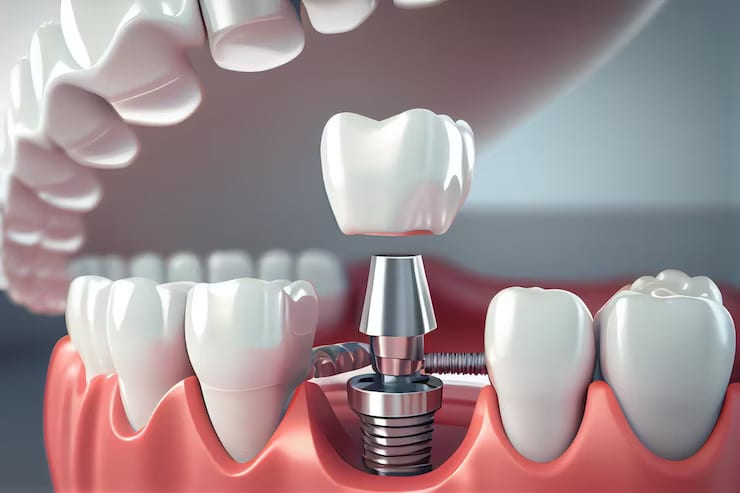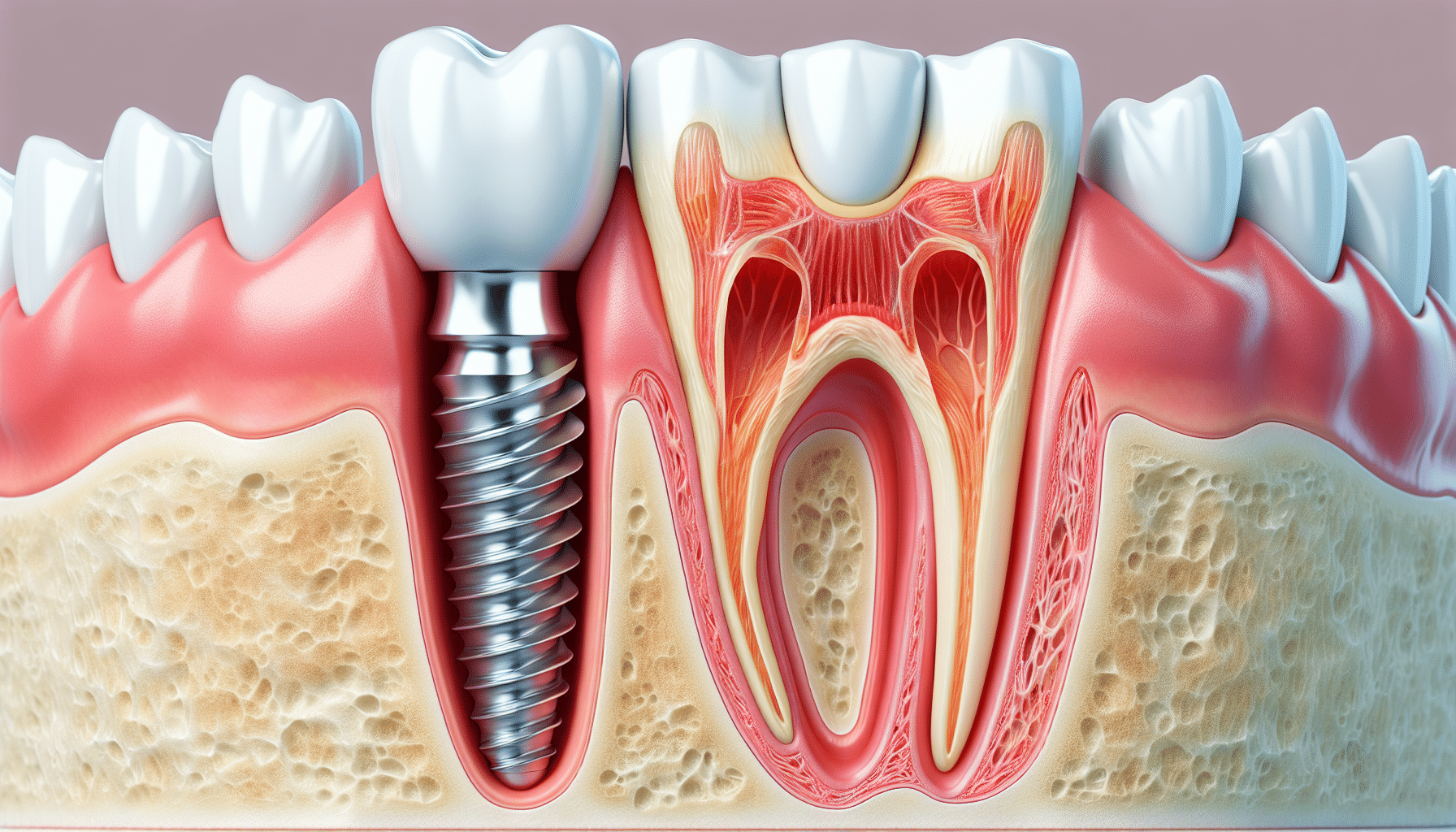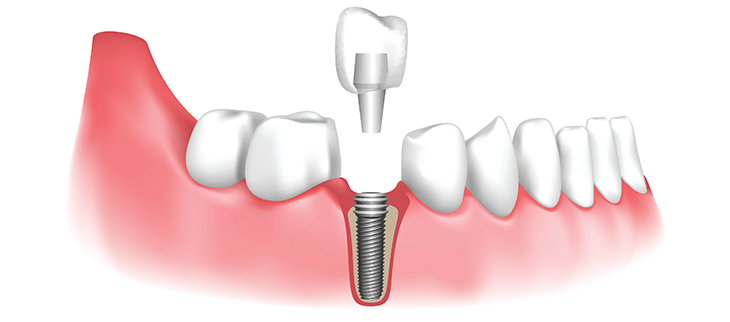Dental Center Condit OH Understanding the Cost of Dental Implants (2024 Edition)
Dental implants have revolutionized restorative dentistry, providing a reliable alternative to traditional strategies for changing missing teeth. The integration of dental implants with the jawbone is a fancy organic process go to this website generally recognized as osseointegration. go now This process not solely anchors the implant securely but in addition helps maintain jawbone health, stopping the bone loss often related to check this site out missing teeth.
The dental implant itself is typically manufactured from titanium, a biocompatible material that the physique accepts. When an implant is placed within the jaw, it is designed to closely mimic the basis of a natural tooth, which is important for efficient integration. The titanium surface encourages the growth of bone cells, enabling the jawbone to bond with the implant over time.
Dental Care Associate Condit OH Understanding the Cost of Dental Implants (2024 Edition)

Several stages constitute the osseointegration process. Initially, when the implant is surgically positioned into the jaw, a healing period is required for the encircling bone to start transforming. During this time, the bone grows across the implant, making a stable and secure foundation. This healing time can differ, sometimes lasting a number of weeks to some months, depending on numerous factors, including the person's total health and the particular location of the implant.
The role of surrounding bone quality is essential. High-density bone sometimes offers a better setting for osseointegration in comparability with lower-density bone. Specialists typically evaluate the standard and amount of bone before the implant placement to determine the most effective plan of action, which may contain bone grafting procedures in instances of insufficient bone quantity. Grafting enhances the probabilities of successful integration by making a more robust base for the implant.
The organic mechanisms behind osseointegration involve varied cellular actions. Osteoblasts, the cells liable for bone formation, migrate to the implanted area and start to lay down new bone materials. Simultaneously, the surface of the titanium implant undergoes changes that facilitate this bonding course of. Some newer implant designs incorporate floor modifications to further improve biological integration.
Dental Center Granville OH Your Local Guide to Dental Implants
Throughout the integration course of, the role of blood supply can't be overstated. An sufficient blood supply nourishes the bone and ensures the right functioning of the cells involved in the therapeutic and integration course of. Improved blood flow leads to quicker healing and better outcomes, which is why surgical methods and aftercare usually prioritize sustaining or enhancing blood circulation to the positioning of the implant.
Improvements in surgical strategies additionally contribute significantly to the success rates of dental implants - Dental Care Associate Johnstown OH. Minimally invasive methods and guided implant surgery allow for extra exact placement of implants, lowering trauma to the encircling tissues and doubtlessly rushing up the healing time. The less trauma experienced by the jawbone can lead to a more favorable environment for osseointegration
Pediatric Dentist Sunbury OH Dental Implant Procedure: What You Need to Know Before Surgery

How a person maintains their oral hygiene after receiving an implant can considerably affect integration success. Proper care around the implant site helps prevent infections, which might disrupt the therapeutic process. Regular dental check-ups are also important to observe the health of both the implant and the surrounding gum and bone tissues.
Long-term success with dental implants is often linked to components similar to lifestyle selections. Patients who smoke or have uncontrolled diabetes might experience decrease charges of osseointegration. These conditions interfere with therapeutic and blood provide, making it critical for people contemplating implants to discuss their health historical past with their dentist.
After the successful integration of the implant, the next section includes placing the prosthetic restoration, corresponding to a crown. The last restoration must match comfortably and functionally integrate with the present dentition. Premier Dental Johnstown OH. Proper alignment and occlusion play important roles in how well the implant will perform over time
Orthodontics Condit OH Frequently Asked Questions About Dental Implants
Dental implants present a long-lasting solution that helps preserve the integrity of the jawbone. When a tooth is misplaced, the bone that after anchored its root begins to deteriorate. Implants stimulate the bone similarly to natural teeth, triggering the jaw to take care of its density and energy. This stimulation is essential for preventing the sunken facial appearance that often accompanies tooth loss.
In conclusion, the mixing of dental implants with the jawbone includes a fancy interaction of biological and mechanical factors. Understanding the osseointegration process can empower individuals to make informed selections about their dental health. By appreciating the significance of selecting a talented dental skilled and adhering to post-operative care, patients can achieve optimal outcomes and enjoy restored function and aesthetics for a couple of years to return.

- Dental implants mimic the structure of natural teeth and provide a stable foundation by integrating with the jawbone via a process referred to as osseointegration.
- The biocompatibility of titanium, generally used for dental implants, performs a vital function in selling profitable bonding with bone tissue.
- Osseointegration usually begins inside a quantity of weeks post-surgery, with the implant floor gradually becoming enveloped by bone cells.
- The mechanical stability of implants is enhanced by their surface roughness, which encourages bone growth and improves the integration process.
- Immediate loading of implants can be possible in sure circumstances, relying on bone density and the patient’s total dental health.
- Over time, the jawbone responds to the presence of an implant by present process reworking, contributing to the long-term success of the process.
- Factors similar to oral hygiene, smoking habits, and systemic health conditions can significantly impact the integration process of dental implants.
- Regular follow-ups and imaging strategies, corresponding to X-rays, may help monitor the success of osseointegration and detect potential problems early.
- The preservation of surrounding bone structure is enhanced by the stimulation offered by dental implants, which might help prevent bone loss in adjacent areas.
- Successful integration not only restores performance to the tooth but additionally contributes considerably to the aesthetics of the patient's smile and facial structure.undefinedWhat are dental implants and how do they work with the jawbone?undefinedDental implants are titanium posts surgically inserted into the jawbone to serve as synthetic tooth roots. Once positioned, they bear a process known as osseointegration, the place the jawbone naturally fuses with the implant, creating a stable basis for the replacement tooth.
How does osseointegration occur?undefinedOsseointegration is a organic process where bone cells develop and fasten to the surface of the dental implant. This usually takes a quantity of months, during which the implant becomes firmly anchored within the jawbone, making certain strength and stability for the bogus tooth.
Premier Dental Sunbury OH Affordable Dental Implants: Finding the Best Value
What components influence the success of dental implant integration?undefinedKey factors include the quality and quantity of the jawbone, the affected person's general health, and oral hygiene practices. Adequate bone density is essential, as insufficient bone may impede successful integration.
Is the pain during dental implant placement significant?undefinedMost sufferers report minimal discomfort during the procedure, as native anesthesia is used. Post-operative pain is mostly manageable with over-the-counter pain reduction medications, and most discomfort subsides within a quantity of days.
How long does the combination process take?undefinedTypically, osseointegration takes about three to six months. However, this will differ primarily based on particular person therapeutic processes and the specific conditions of the jawbone.
Can anyone get dental implants?undefinedMost individuals are candidates for dental implants; nevertheless, sure conditions corresponding to uncontrolled diabetes or extreme gum disease could affect eligibility. A thorough evaluation by a dental professional is necessary to determine suitability.
Orthodontics Alexandria OH Full Mouth Dental Implants
What could be done if there is not sufficient jawbone for integration?undefinedIf there may be inadequate bone, procedures like bone grafting could be performed to reinforce the jawbone. Once the graft heals, dental implants can then be placed, permitting for successful integration.
Are there long-term care concerns after getting dental implants?undefinedYes, sustaining excellent oral hygiene is important for the longevity of dental implants. Regular dental check-ups and cleanings also assist prevent complications and guarantee the ongoing health of the surrounding bone and gum tissue.
Johnstown Dental Columbus OH Dental Implant Services: Find the Best in Your Area
How do dental implants evaluate to other tooth replacement options?undefinedDental implants are often considered superior to dentures and bridges due to their sturdiness, stability, and the preservation of jawbone health. Unlike different choices, implants fuse with the jawbone, which helps preserve bone density and facial structure.